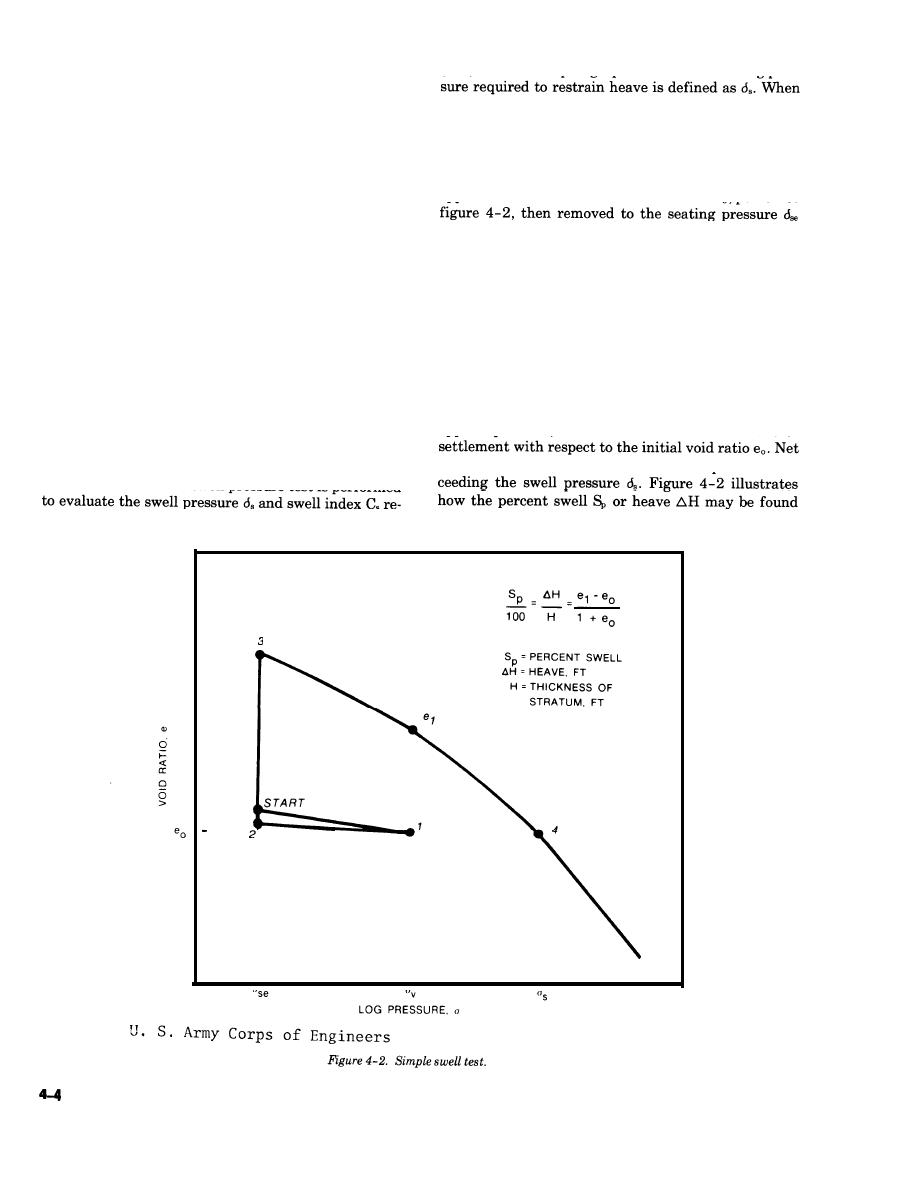
TM 5-818-7
port from adhesion along the perimeter of shaft
(5-8) discussed in paragraph 5-4e. The confining pres-
foundations or the uplift that develops on the shaft
when swelling occurs.
little is known about swell behavior or groundwater
conditions, an appropriate swell testis given in (a) and
a. Swell tests. Laboratory methods recommended
---
(b) below.
for prediction of the anticipated volume change or po-
tential in situ heave of foundation soils are consoli-
(a) An initial loading pressure, simulating field
initial (preconstruction) vertical pressure &, should be
dometer swell and soil suction tests, The WES expan-
applied to determine the initial void ratio e., point 1 of
sive soil studies show that consolidometer swell tests
may underestimate heave, whereas soil suction tests
may overestimate heave compared with heaves meas-
(i.e., the lowest possible load) prior to adding distilled
water, point 2. The specimen is allowed to expand at
ured in the field if a saturated final moisture profile is
assumed (chap 5). The economy and simplicity of soil
the seating pressure until primary swell is complete,
suction tests permit these tests to be performed at fre-
point 3, before applying the consolidation pressures.
quent intervals of depth from 1 to 2 feet.
(b) The swell test of figure 4-2 can eliminate
the need for additional tests when behavior is differ-
(1) Consolidometer. Recommended consolidom-
eter swell tests include swell and swell pressure tests
ent than that anticipated (e.g., the specimen consoli-
dates rather than swells following addition of water at
described in Appendix VIII of EM 1110-2-1906. The
loading pressures greater than the seating pressure).
swell test may be performed to predict vertical heave
The void ratio-log pressure curve for final effective
AH of soil thickness H when the vertical overburden
and structural pressures on thickness H are known
pressures, varying from the seating to the maximum
applied pressure, can be used to determine heave or
prior to the test. The total vertical heave at the ground
surface is the sum of the AH for each thickness H in
settlements will occur for final effective pressures ex-
the soil profile. Figure 5-4 illustrates the application
of swell test data. The swell pressure test is performed
with respect to the initial vertical pressure&.
quired for prediction of vertical heave by equation




 Previous Page
Previous Page
